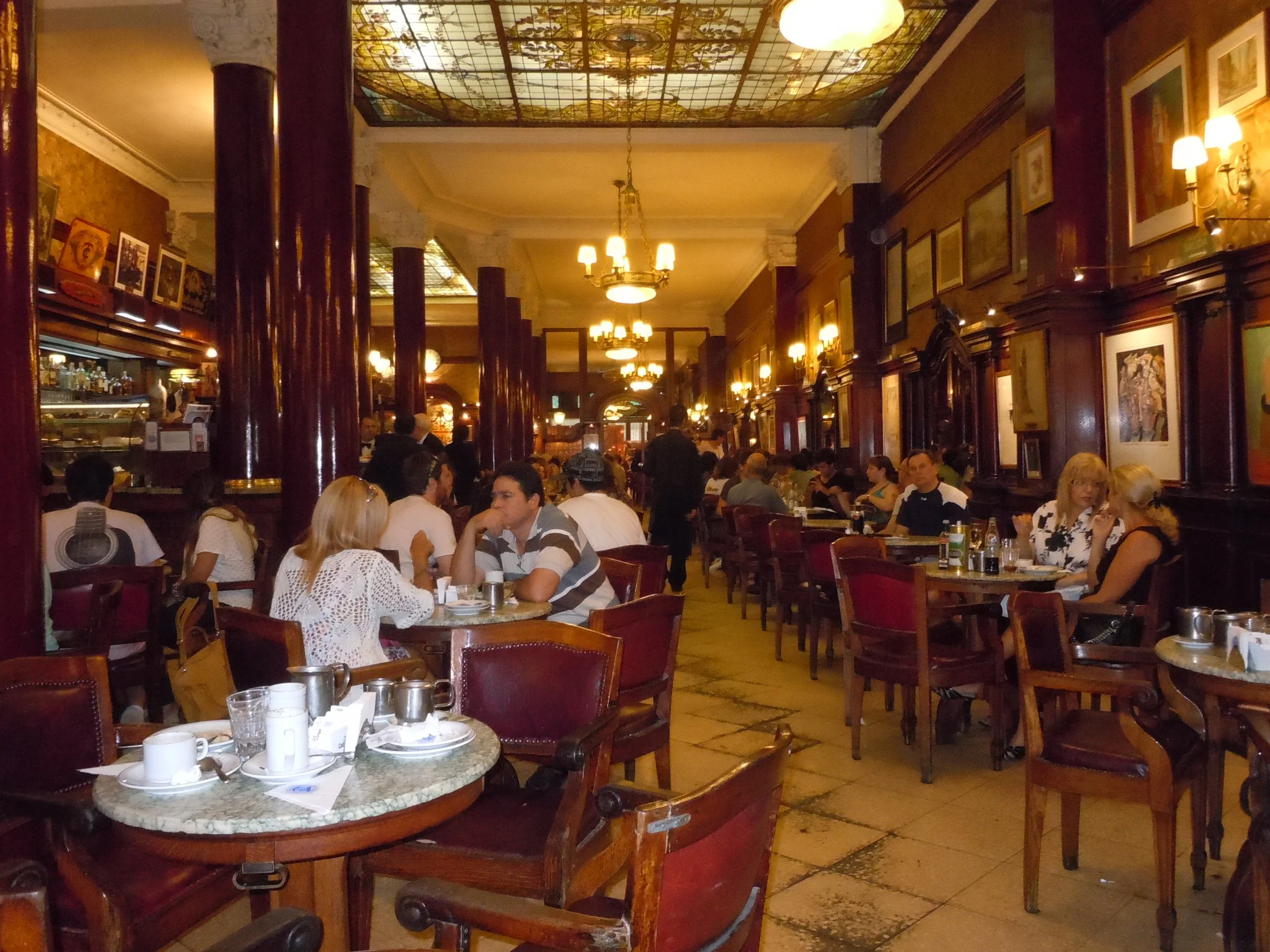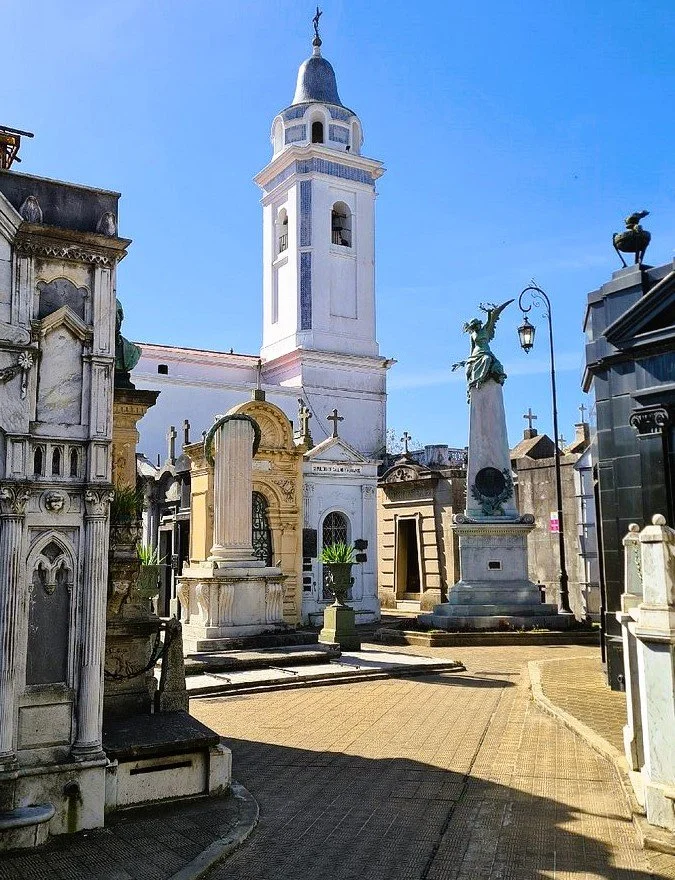Argentina’s Past Glories and Future Hopes on Display in Lively Buenos Aires
Modern Argentina was forged out of a large Spanish territory known as the Viceroyalty of the Rio de la Plata. The territory once included Paraguay, Uruguay, and parts of Bolivia. Argentina remains the eighth largest country in the world in terms of size, the second largest economy in South America, and a nation with a recognized potential for greatness. It has an educated population, decent infrastructure, extensive ranching and farming land, substantial mineral resources, and a vibrant culture.
Despite these advantages, Argentina has struggled to overcome political disunity and missed opportunities for economic growth over the past fifty years. One Argentinian pop song about the country written in 2004 called “La Argentinidad al palo” described the nation’s paradoxes as follows: “From ecstasy to agony our history oscillates. We can be the best or even the worst with the same ease.” Looking to the future, the country’s business community and government leaders are committed to revitalizing the economy and achieving a stronger quality of life for its forty-six million people.
The City of Buenos Aires has been the centerpiece of the culture, government, and economy of Argentina ever since the country declared its independence in 1816. Anyone who visits Buenos Aires will be struck by the European feel of the capital which reflects the blended heritages of the Italian, Spanish, German, and European peoples who comprise almost 90% of the nation’s population today. As you drive through the broad boulevards of the city or walk along the pleasant waterfront of the Plata River, you see a cosmopolitan citizenry at work and at play. There are numerous historic sites, fashionable neighborhoods, and picturesque places to explore around the city that embody important elements of Argentina’s people and history. It is helpful to book a hotel in the center of the city as a base for walking to these destinations or taking short trips to see them.
Here are eight places or activities worth experiencing on an initial trip to Buenos Aires.
Visit the Pink House Palace called the Casa Rosada
One of the principal symbols of Argentina is its Presidential Palace which is known as the Pink House or Casa Rosada because of the distinctive color of the building. Originally completed in 1885 on a riverbank adjacent to the city’s colonial fort, it now stands proudly alone at the east end of the Plaza de Mayo on solid ground far back from the Plata River. The Palace serves as the executive and administrative offices of the country’s President. It is the site of most diplomatic meetings and important political events. The palace has a beautiful courtyard and balconies which look out onto the plaza and the city. Short tours of the palace are available by prior reservation on weekends and some holidays.
Visit the Plaza de Mayo
The Plaza de Mayo, the oldest park in the city and historic public gathering place is famous for many reasons. This large square has been at the center of many important events during Argentina’s history including the launching of the revolution against the Spanish viceroy in 1810, daily protests in the 1980s by hundreds of mothers whose children “disappeared” during military rule of the country, and celebrations of other important events such as Presidential elections and World Cup victories. We walked around the park one morning to visit the many historic buildings and landmarks there including the Casa Rosada, the white colonial town hall called the Cabildo where the movement for Argentine independence was founded, and the neo-classical and domed Banco de la Nacion that once controlled the mercurial finances of the nation. Another prominent structure there is the Metropolitan Cathedral which was the home parish of Argentinian Cardinal Jorge Mario Bergoglio who is now known as Pope Francis.
During one weekend day of our visit, we saw both sides of the Plaza experience. Initially, we noticed there was a festival going on throughout the Plaza. A mellow crowd sampled local food booths, while bands played, and children frolicked on inflatables and kiddie rides. Although some people were handing out leaflets, it seemed like a Memorial Day celebration. By early evening, however, all roads leading in that direction were closed because the festival in the Plaza had transformed into a large demonstration and the police had moved in to clear the area. Our taxi driver said it was “just another lively day in Buenos Aires.”
Enjoy the Famous Coffee Shops, Galleries, and Cafes of the City
Although Argentina is not a large coffee producing nation because of its temperate climate, its people and especially those in Buenos Aires have created a vibrant culture with plenty of specialty coffee establishments and relaxing cafes throughout the city. We had our breakfast coffee near the square at one of the city’s renowned cafes called the Café Tortoni. This is a fashionable coffee shop started in 1858 on the Avenue de Mayo which is known for its mahogany furnishings, mirrors, ornate light fixtures, and lively atmosphere. Traditionally, a popular hangout for the city’s artists, celebrities, and intellectuals, it still attracts young professionals and tourists. The cafe would be a popular attraction in other cultural centers like New York, London, or Madrid. Nightly tango performances at a small theater inside add to the nighttime ambiance of the café. People who want to relax and take in the atmosphere of the city during the day and at night also flock to the cafes, restaurants and entertainment activities found in the Palermo neighborhood. This fashionable section of the city is known for its galleries, boutiques, pleasant parks, large racetrack, and public zoo.
Walk Around the Recoleta Cemetery
The Recoleta section of Buenos Aires is an area which reflects the fascination which city residents of European origin had with the style and feel of Paris during the Belle Epoque era of the late 19th and early 20th century. While no longer peopled solely by the elites, there is a grace and style to the neighborhood that has endured. The five-star hotels, boutiques, plazas, and cultural activities in that area are popular, but the prime attraction is the 14-acre necropolis known as the Cementerio de la Recoleta. Opened in 1822, the cemetery features more than 6400 marble tombs, monuments, and large mausoleums that reflect the importance of leading Argentinians buried there. Some areas of the cemetery are tree lined with wide avenues but others are narrow with imposing and haunting crypts. Many different architectural styles are on display d including Greco-Roman palaces, Art Nouveau statues, and Gothic elements. Guides and maps are available to assist visitors in exploring the cemetery and finding the tombs of various the notable Presidents, Generals, poets, and dignataries buried there including the plague and tomb honoring Eva Peron.
Visit the Beautiful Teatro Colon
You do not have to be a fan of opera, classical music, or ballet to enjoy a tour or a concert at the spectacular Teatro Colon theater. This world class center for the performance arts was built in 1908 by a renowned architect and then restored and upgraded in 2010. It is rated as one of the best opera houses in the world because of the grandeur of the building and the ornate furnishings throughout the grand hall, staircases, and reception rooms. The building is seven stories high and seats 2500 people for performances. Throughout the 20th century, the theater hosted many of the world’s top conductors, singers, and dancers. Backstage tours of the building usually pass through the main halls as well as show off the costumes and dressing rooms to visitors.
Try an Evening Out at a Tango Production Show or a Small Club
The tango is still a popular form of entertainment in Argentina and there are different ways to explore the music and dance elements of this genre in Buenos Aires. One option is to get a ticket to a full production show at one of the theaters in the city such as the Rojo Tango Show in the Puerto Madera section of the city over the river, or at the Tango Porteno Show in the Microcentro section near the Teatro Colon. These Broadway type presentations usually include dinner prior to the show along with drinks. The shows often tell a story with set changes through various performances by tango dancers, singers, folk dancers, and musicians. Some people find the performances to be quite good and entertaining but people wanting to see the more classic tango may find it too much of a Las Vegas style entertainment. If you want to see a purer form of the tango, there are also tango clubs that welcome regular dancers and visitors and offer classes for beginners.
Sample One of the Leading Steakhouses
People in Argentina are enthusiastic about many things in life including their favorite sport and their favorite cuisine. Football is clearly the most popular sport in the country. Argentina has won the World Cup three times and finished as the runner up three times. Similarly, steak and steakhouses are the most popular food in the country. The nation has the highest consumption of beef on the planet and the number of cows scattered about the plains of the Pampas and the rest of the country exceeds the number of people. Debates about food production and the best ways to dry meat, cut meat and cook meat are common in the restaurant industry and in private kitchens. To understand the food culture of Argentina, you should spend an evening in Buenos Aires going to a quality steakhouse. Figuring out what is the best steakhouse to visit in the city is difficult. There are numerous Michelin rated restaurants in the city and opinions differ as to which is the best steakhouse. One traditional choice is the family run Don Julio steakhouse and another is the popular Fago Asodo steakhouse and barbecue restaurant. Reservations can be difficult to obtain so do some research, talk to your hotel concierge, and enjoy your meal.
Take a Break at One of the Classically Designed Shopping Centers
There is no shortage of small shops, wine and food markets, fashion boutiques, arts and crafts and general merchandise outlets scattered throughout the downtown and neighborhoods of Buenos Aires. A unique shopping experience for visitors is to browse through one of the classically designed buildings which have been converted into shopping centers and stop for a snack or relaxing drink. One place which is located on the pedestrian Calie Florida Avenue is the Gallerias Pacifico. This opulent building was constructed in 1889 and used as an art museum until it was converted into a shopping center in 1990. Known for its mural painted dome murals and considered a national historic monument, it now offers specialized leather stores, high fashion outlets, gifts, and international brands. Another interesting shopping destination is the Patio Bullrich shopping center, which was once a meat auction house, but now displays designer clothes from Argentinian and international brands under elegant chandeliers and glass ceilings to elite shoppers. Finally, the Albasto was an Art Deco building from the 1930s converted into a full-scale mall with local retailers, electronic outlets, a children’s museum and numerous health and beauty stores.










